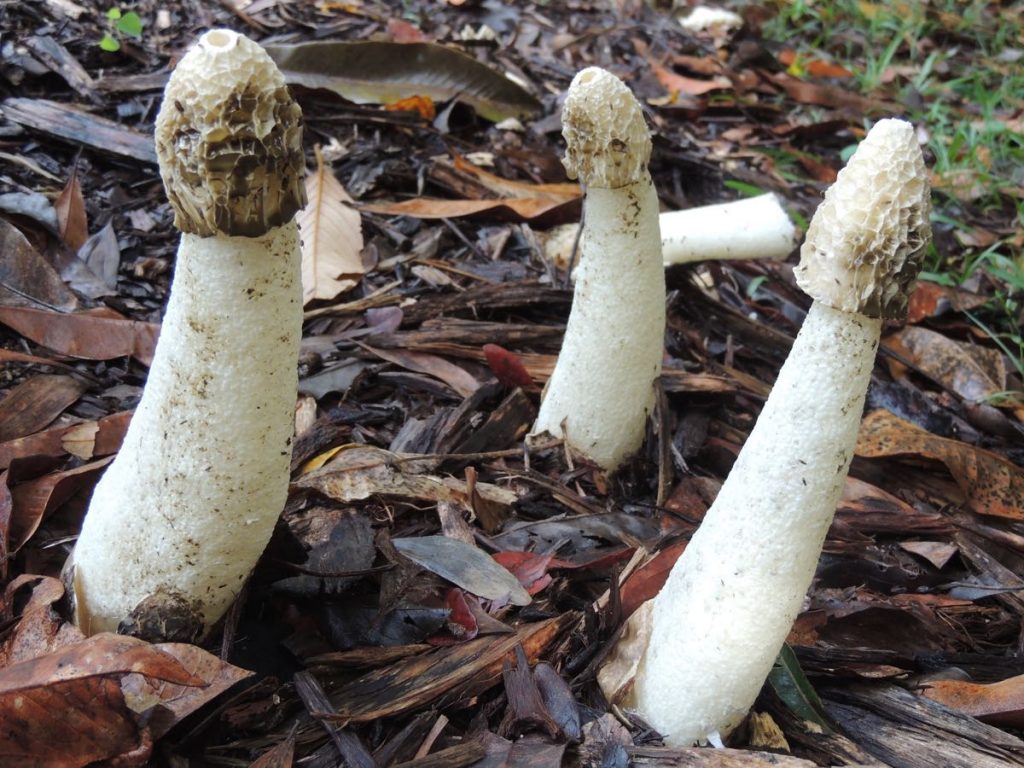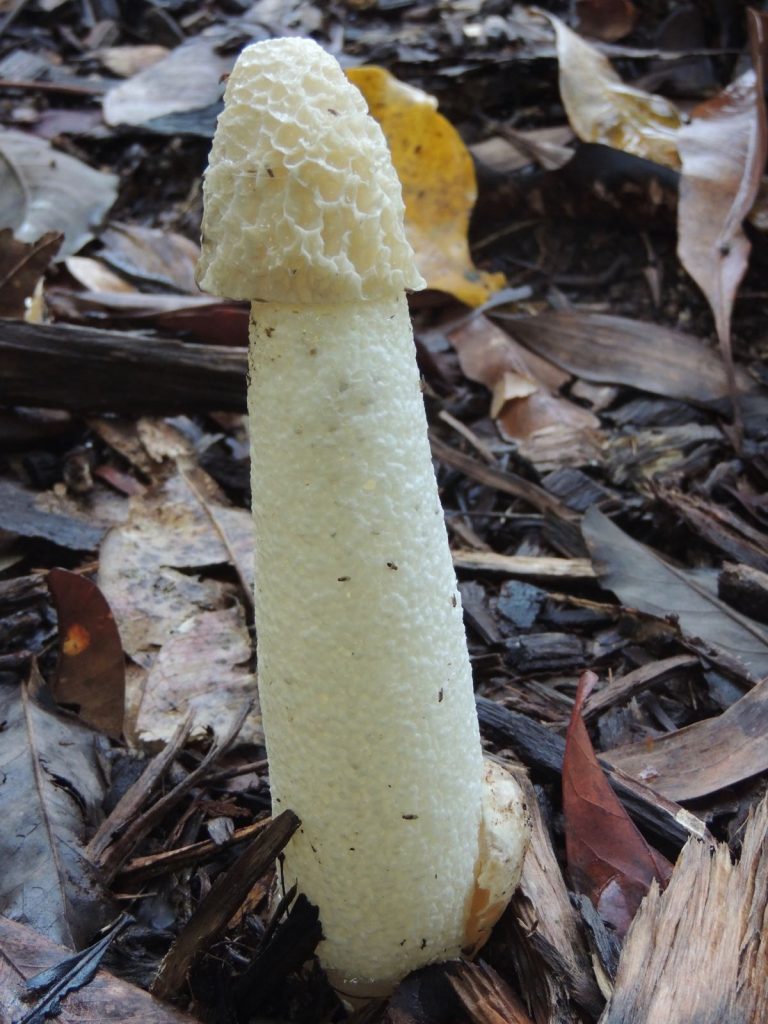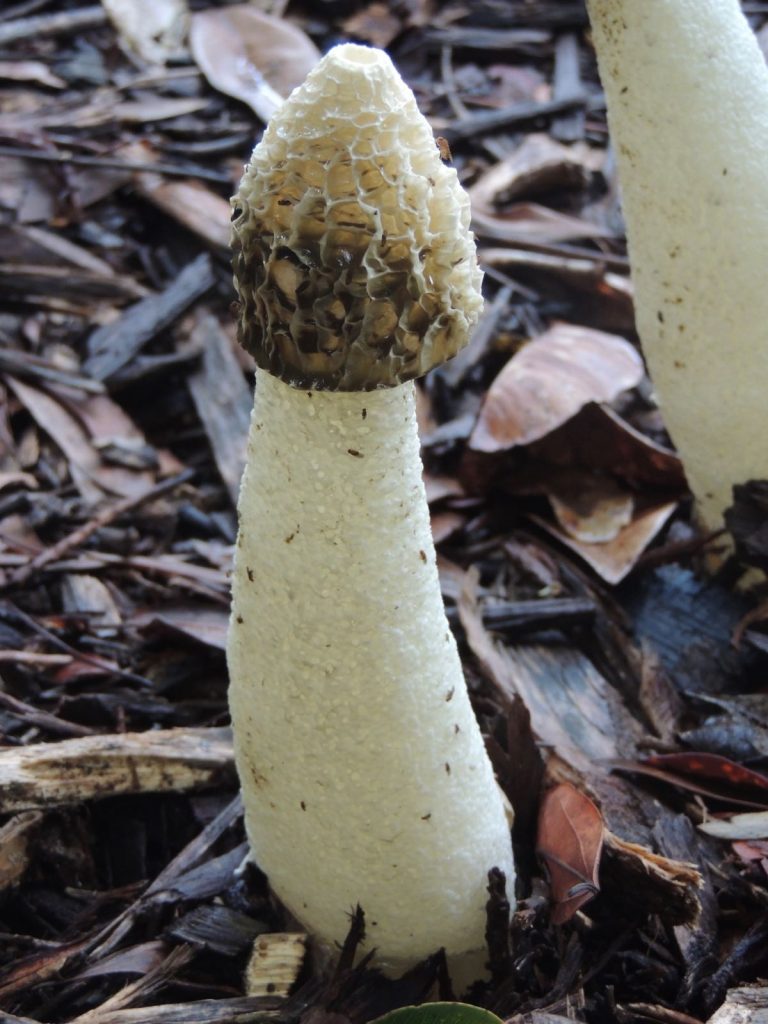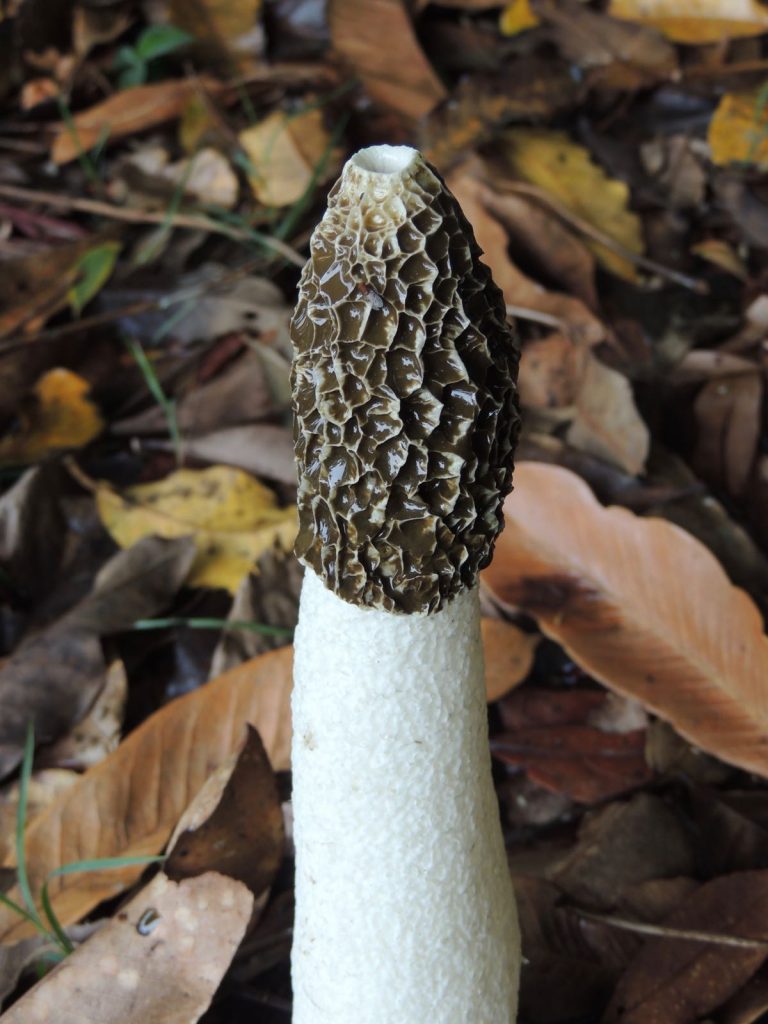Anyone visiting the Village Green in recent days will have noticed the amazing fungi that has sprung from the ground in the wood-chip mulch at the Trees In Memory. This fungi is commonly known as ‘Stinkhorn Fungi’ – distinctive for both its foul odour and phallic shape when mature.

Stinkhorn fungi are widespread throughout Europe and North America having been introduced into Australia. My research would suggest the specimens at the Village Green are the species Phallus impudicus. Stinkhorns occur in moist habitats rich in wood debris, such as the forest floor and gardens. This would explain why they are growing so happily in the wood chips at the Village Green.
The fungi emerges from an egg-shaped fruiting body in the ground. The fruiting structure (stalk) grows tall, up to 25cm, and it is white with a slimy white to brownish conical head. The head tends to darken in colour as the fungi matures. The head exudes a gelatinous slime which contains the spores. Insects such as flies are attracted by the foul smell of this spore-laden slime. Unlike many other fungi, the spores of stinkhorns are not distributed in the air, but by their insect visitors.


Make a point of visiting the Village Green in the near future to check out these amazing fungi. They may not last long, so don’t miss out on these fascinating and very smelly phallic fungi!

Text & Photos by Michele Bird

Great article, Michele.
I also noticed these fungi a few days previously when they had freshly emerged. You indicate that the heads tend to darken when as they mature, but my understanding is that the heads start off covered in brown slime that is attractive to flies but turn white with age as the flies consume this tasty (to them), lovely-smelling coating. Rain can also help to wash away the colour. Stinkhorns have a world-wide distribution and there are a number of native species. I haven’t seen any mention of introduced species here in my web searches.
These specimens on the Village Green do indeed look very much like Phallus impudicus, but this species does not seem to have been recorded in Australia according to the Atlas of Living Australia, although it has been recorded in New Zealand. The key to Qld stinkhorn fungi produced by the Qld. Mycological Society doesn’t include P. impudicus and there are no other stinkhorns that look much like it other than Phallus indusiatus, which has a very prominent veil and a thinner stalk. Perhaps this is a new record for Australia!
Two other species of stinkhorn that I have found growing in the mulch in my garden include the above-mentioned Bridal Veil stinkhorn (Phallus indusiatus) and the orange-coloured Phallus multicolor that also has a distinct veil.
Phallus multicolor
The very phallic appearance of stinkhorns apparently disturbed the delicate sensibilities of ladies in the past centuries and I found a lovely reference to the reaction of Charles Darwin’s eldest daughter to the eruption of these “impudent” fungi in her garden:
“She waged a bizarre little war against the so-called stinkhorn mushroom (Phallus Ravelenlii) that still pop up in the woods around the Darwin estate. Apparently, the similarity of the mushroom to the human penis was bit much for poor Etty. As her niece (Charles’s granddaughter) recalled years later, “Aunt Etty…armed with a basket and a pointed stick, and wearing a special hunting cloak and gloves,” would set out in search of the mushrooms. At the end of the day, Aunt Etty “burned them in the deepest secrecy on the drawing room fire with the door locked—because of the morals of the maids.”
Fantastic well done Michelle we also have one on our property cheers Glenda